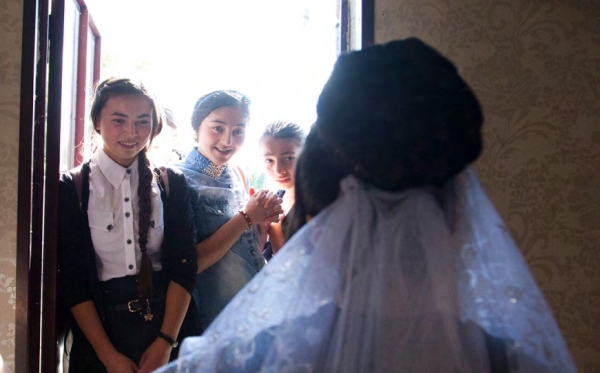
In October this year, the international human rights organization Equality Now published a report titled Breaking Barriers: Addressing Child, Early and Forced Marriage in Eurasia. The report provides a comprehensive analysis of child, early, and forced marriages (CEFM) in seven Eurasian countries, including Tajikistan.
The report examines the root causes, consequences, legal and policy frameworks, and potential strategies to combat this harmful practice. The research was conducted in Armenia, Azerbaijan, Georgia, Kyrgyzstan, Russia, Tajikistan, and Uzbekistan.
The term “early marriage” is often used as a synonym for “child marriage.” Both refer to marriages, formal or informal, involving individuals under the age of 18. Internationally, the age of 18 is recognized as the threshold at which a person becomes an adult and acquires full legal rights.
Why are child marriages dangerous?
Based on respondents' stories, various statistics, and expert opinions, the Equality Now report highlights the harmful consequences of early marriages, including: domestic violence by husbands and their relatives; restricted access to education; forced labor (essentially servitude); sexual abuse, including rape.
Additionally, young girls in such situations often lack awareness of their rights and face societal stigma and pressure. This forces them to endure their new lives silently, even in cases of domestic violence or complications during pregnancy and childbirth.
How prevalent are child marriages in Eurasia?
The report notes that due to the lack of official data and awareness campaigns, it is challenging to assess the prevalence of early marriages accurately across most countries studied.
“Various factors, including underreporting of cases and the fact that official statistics typically account only for civil marriages and not religious ones, hinder the collection of accurate data and a comprehensive understanding of the issue. Information on child marriages involving boys is often overlooked or inadequately addressed,” the researchers write.
Nevertheless, based on available data, researchers provided the following estimates for the prevalence of child marriages: Armenia — 5.0%; Azerbaijan — 11%; Georgia – 14%; Kyrgyzstan — 13%; Russia – 6.0%; Tajikistan – 9.0%; and Uzbekistan — 3.4%.
Tajikistan ranks in the middle, with 9.0% of marriages involving minors. Additionally, 7.0% of teenage girls in Tajikistan have given birth at the age of 15–19.
Experts also highlight regional differences within countries.
“In Tajikistan, adherence to traditional customs varies: in some regions, particularly rural areas of Isfara, Kuhistoni Mastchoh, Devastich districts in Sughd province, and the Rasht Valley (eastern Tajikistan), they are followed more strictly,” the report states.
Why are girls married off early?
The report points to the same causes found in many other studies: societal traditions and financial difficulties.
In Tajikistan, traditional views and practices, deeply rooted in rural areas where 70% of the population lives, significantly contribute to the persistence of child and forced marriages.
“These marriages are perceived differently by society and authorities, but they are generally supported by the prevailing model of multi-generational families and reinforced by societal expectations and entrenched gender norms. Early marriages are often seen as the norm, and any deviation from this can lead to social stigmatization,” the report notes.
Financial hardships in the families of young girls are often another reason for early marriages.
Other contributing factors include a lack of education, especially in impoverished rural areas, and societal marginalization. Unmarried girls are frequently targeted by relatives and acquaintances and face dismissive attitudes from society.
What is the legal age for marriage in Central Asia?
In Tajikistan, as in other Central Asian countries, the legal marriage age is 18 for both men and women. However, there are ways to marry off children before this age.
Still, the report concludes that this is insufficient to eradicate the practice of early forced marriages.
What do experts propose?
Experts suggest a wide range of measures across different sectors, from strengthening legal frameworks to reforming education systems.
They recommend introducing a specific criminal code article or aggravating circumstances for abduction for forced marriage; ensuring proportional penalties that reflect the severity of the crime; eliminating exceptions that allow perpetrators to evade responsibility, such as voluntary release of the victim (Azerbaijan, Russia) or remorse (Azerbaijan, Russia, Tajikistan, Uzbekistan, Armenia).
At the institutional level, governments are advised to adopt human rights-based, gender-sensitive action plans, create national monitoring systems involving civil society organizations, and more.
Training law enforcement and judicial officers, lawyers, teachers, and healthcare workers in human rights standards is also essential.
Other recommendations include: improving data collection methods for accurately assessing CEFM prevalence; removing barriers to education for girls; providing medical services such as family planning, HIV prevention, and maternal healthcare; and conducting awareness campaigns at the community and school levels, focusing on adolescent girls’ issues such as menstrual health, nutrition, and the prevention of sexually transmitted infections.
Additionally, it is crucial to ensure that married girls have access to educational and vocational training programs, incorporate human rights education and gender equality into school curricula, and implement a range of other measures to eradicate the practice of child marriages completely.




